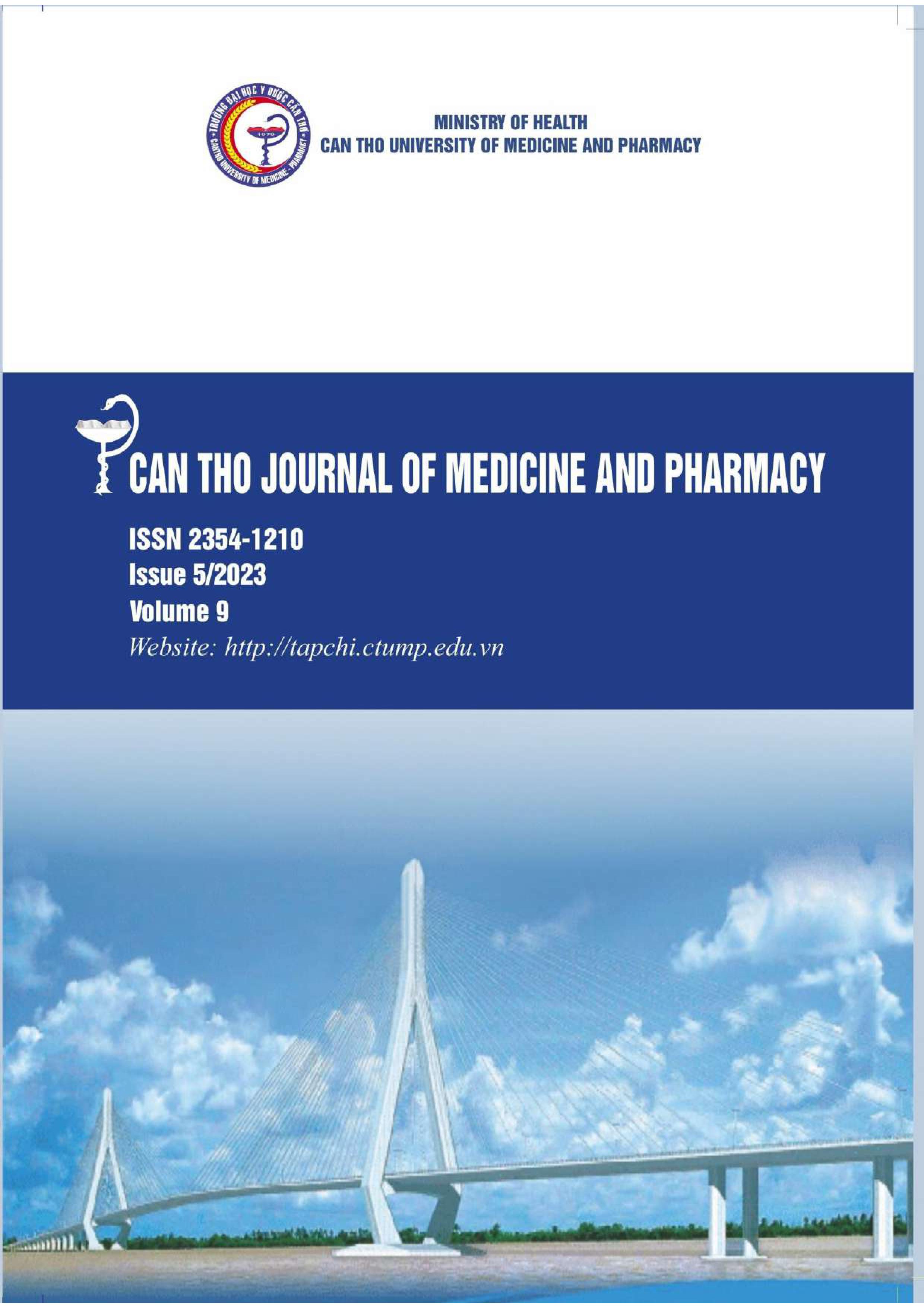EFFICACY OF INTRATHECAL MORPHINE AFTER LAPAROSCOPIC SURGERY FOR COLORECTAL CANCER AT CAN THO UNIVERSITY OF MEDICINE AND PHARMACY HOSPITAL
Main Article Content
Abstract
Background: There have been many studies in using intrathecal morphine order to reduce pain after obstetrics and gynecological surgeries, abdominal surgeries and orthopedic surgeries. These studies have shown that intrathecal morphine is very effective for pain relief after surgery. However, intrathecal morphine also has side effects especially in obstetric and gynecological surgeries such as pruritus, postoperative nausea and vomiting, and delayed respiratory depression. Although postoperative analgesia with intrathecal morphine has been widely used in obstetrics and gynecological surgeries, orthopedic surgeries, there have been very few studies on postoperative pain relief with intrathecal morphine for colorectal surgery. Laparoscopic colorectal surgery requires multimodal analgesia, so using intrathecal morphine to reduce postoperative pain in this surgery is essential in clinical practice. Therefore, studying the effectiveness of intrathecal morphine in this surgery is necessary, so we conducted this study. Objectives: To assess the effectiveness of analgesic and side effects of intrathecal morphine after laparoscopic colorectal surgery. Materials and Methods: This was a descriptive, cross-sectional study, including 63 patients undergoing laparoscopic colorectal cancer surgery with intrathecal morphine before general anesthesia. The degree of analgesia was assessed based on VAS. The postoperative side effects observed were postoperative nausea and vomiting, respiratory depression, and pruritus. Results: The analgesic effect at rest and on slight movement was 95.2%, and 88.9% respectively with VAS ≤ 3. The side effects were postoperative nausea and vomiting (6.3%), and pruritus (1.6%), both postoperative nausea and vomiting and pruritus (3.2%). In conclusion, 300µg intrathecal morphine showed a safe and positive analgesic effect for laparoscopic colorectal cancer surgery.
Article Details
Keywords
intrathecal morphine, laparoscopic colorectal surgery, analgesia, pain relief, VAS
References
2. Amit Merchea, et al. (2018), Efficacy and outcome of intrathecal analgesia as part of an Enhanced Recovery Pathway in colon and rectal surgical patients, Surgery Research and Practice.
3. Jefferson Zhi Jie Tang (2019), A literature review of intrathecal morphine analgesia in patients undergoing major open hepatopancreatic-biliary (HPB) surgery, Anesthesia Pain Medicine, 9(6).
4. Joo-Hyun Jun, et al. (2017), Comparison of intrathecal morphine and surgical-site infusion of ropivacaine as adjuncts to intravenous patient-controlled analgesia in living-donor kidney transplant recipients, Singapore Med Journal, 58(11), pp. 666-673.
5. Kalindi A DeSousa, Rajkumar Chandran (2014), Intrathecal morphine for postoperative analgesia: Current trends, World J of Anesthesiol, 3(3), pp. 191-202.
6. Khaled Mohamed Fares, et al. (2014), High dose intrathecal morphine for major abdominal cancer surgery: A prospective double-blind, dose-finding clinical study, Pain Physician, Anesthesia and Intensive Care department, South Egypt Cancer Institute, Assiut University.
7. Kong S. K., et al. (2002) Use of intrathecal morphine for postoperative pain relief after elective laparoscopic colorectal surgery, Anesthesia-perioperative medicine critical care and pain, volume 57, issue 12, pp. 1168-1173.
8. Mark V. Koning, et al. (2018), Intrathecal morphine for laparoscopic segmental colonic resection as part of Enhanced Recovery Protocol, Reg Anesth Pain Med, 43(2), pp. 166-173.
9. Pervez Sultan, et al. (2016) The effect of intrathecal morphine dose on outcome after elective cesarean delivery: A meta-analysis, Anesthesia-Analgesia, 123, pp. 154-64.
10. Robert W. Hurley, et al. (2020), Acute postoperative pain, Miller 9th edit, pp. 2614-2637.
11. Roger Chou, et al. (2016), Guidelines on the management of postoperative pain, American Pain Society, The Journal of Pain, Volume 17, No 2, pp. 131-157.
12. Wojciech Weigl, et al. (2017), Perioperative analgesia after intrathecal fentanyl and morphine or morphine alone for cesarean section, Medicine (Baltimore), 96(48).
13. Wongyingsinn M., et al. (2012), Spinal analgesia for laparoscopic resection using enhanced recovery after surgery programme: better analgesia, but no benefits on postoperative recovery: a randomized control trial, British Journal of Anesthesia, 108(5), pp. 850-6.
14. Zoran Slavkovic, et al. (2013), Comparison of analgesic effect of intrathecal morphine alone or in combination with bupivacaine and fentanyl in the patients undergoing total gastrectomy: a prospective randomized, double ‒ blind clinical trial, Vojnosanit Pregl, 70(6), 541-557.


